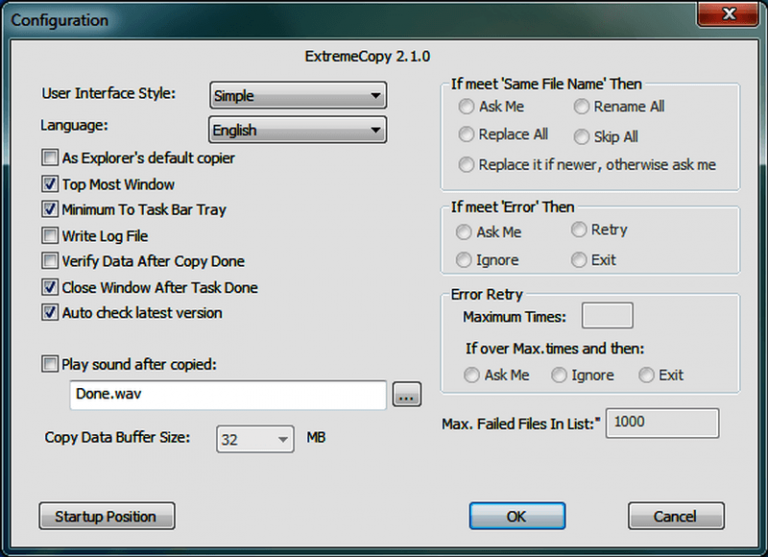

The benchmarks quoted below are based on use of WeakSet.

By default, a cache based on WeakSet is used, but if WeakSet is not available then a fallback is used. The following object types are copied directly, as they are either primitives, cannot be cloned, or the common use-case implementation does not expect cloning:Ĭircular objects are supported out of the box. String primitive wrappers (e.g., new String('foo')).
 Number primitive wrappers (e.g., new Number(123)). Boolean primitive wrappers (e.g., new Boolean(true)). The following object types are deeply cloned when they are either properties on the object passed, or the object itself: object => Object, or any custom constructor. error => Error, AggregateError, EvalError, RangeError, ReferenceError, Synta圎rror, TypeError, URIError. arrayBuffer=> ArrayBuffer, Float32Array, Float64Array, Int8Array, Int16Array, Int32Array, Uint8Array, Uint8ClampedArray, Uint16Array, Uint32Array, Uint64Array. NOTE: This method is significantly slower than copy, so it is recommended to only use this when you have specific use-cases that require it. getOwnPropertyDescriptor ( value, property ) || ) defineProperty ( clone, property, Object. Use the new window to locate the files you would like to copy.Const createStrictClone = ( value, clone ) => Object. While keeping the USB drive window open, press Ctrl+N to open a new File Explorer window. RELATED: How to Find Your Missing USB Drive in Windows 7, 8, and 10 Find the Files You Want to Copy If the USB drive doesn’t show up in your “Devices And Drives” list, you’ll have to perform some in-depth sleuthing to figure out what it going on. Note that the “C:” drive is almost always the main drive on your PC, unless you go very out of your way to change it.ĭepending on how File Explorer is configured (see the “Layout” options under the “View” menu), the style of the icons within this window may appear different on your machine. If your USB drive has been recognized correctly and is ready to receive files, it will appear in this location with a name and a drive letter assigned to it, such as “D:”, “E:”, or “F:”, or another letter. In the window that pops up, locate the section called “Devices And Drives.” If necessary, click the small carat-shaped arrow to the left of the section header to reveal a list of the drives.
Number primitive wrappers (e.g., new Number(123)). Boolean primitive wrappers (e.g., new Boolean(true)). The following object types are deeply cloned when they are either properties on the object passed, or the object itself: object => Object, or any custom constructor. error => Error, AggregateError, EvalError, RangeError, ReferenceError, Synta圎rror, TypeError, URIError. arrayBuffer=> ArrayBuffer, Float32Array, Float64Array, Int8Array, Int16Array, Int32Array, Uint8Array, Uint8ClampedArray, Uint16Array, Uint32Array, Uint64Array. NOTE: This method is significantly slower than copy, so it is recommended to only use this when you have specific use-cases that require it. getOwnPropertyDescriptor ( value, property ) || ) defineProperty ( clone, property, Object. Use the new window to locate the files you would like to copy.Const createStrictClone = ( value, clone ) => Object. While keeping the USB drive window open, press Ctrl+N to open a new File Explorer window. RELATED: How to Find Your Missing USB Drive in Windows 7, 8, and 10 Find the Files You Want to Copy If the USB drive doesn’t show up in your “Devices And Drives” list, you’ll have to perform some in-depth sleuthing to figure out what it going on. Note that the “C:” drive is almost always the main drive on your PC, unless you go very out of your way to change it.ĭepending on how File Explorer is configured (see the “Layout” options under the “View” menu), the style of the icons within this window may appear different on your machine. If your USB drive has been recognized correctly and is ready to receive files, it will appear in this location with a name and a drive letter assigned to it, such as “D:”, “E:”, or “F:”, or another letter. In the window that pops up, locate the section called “Devices And Drives.” If necessary, click the small carat-shaped arrow to the left of the section header to reveal a list of the drives.







 0 kommentar(er)
0 kommentar(er)
